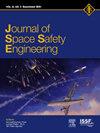概率数学类比在航空航天安全问题中的应用
IF 1.7
Q3 ENGINEERING, AEROSPACE
引用次数: 0
摘要
使用概率数学类比(pma)的预测建模从来都不是必须的,但是,除了其他可能的实验和建模工作之外,通过提供有关航空航天任务或异常情况的最可能结果的有价值的定量信息,通常可以为一些关键的航空航天安全任务和问题(ASP)提供补充有用的信息。在这篇文章中,指出了一些著名的,“经典的”,过去由杰出的研究人员在应用科学和工程的各个领域所采用的类比,以及作者目前在航空航天安全领域所建议的一些类比,重点是概率分析(“数学”)模型的应用。该方法基于可靠性概率设计(PDfR)概念的使用。该概念最初是为了解决航空航天电子和光子产品的可靠性物理问题,然后应用于各种人在环(HITL)情况,当仪器的可靠性,其硬件和软件,以及所涉及的人类的性能,如果有的话,共同有助于航空航天任务或特殊情况的结果。一些医疗(外科),临床,自动驾驶,甚至天体生物学问题使用基于pma的方法也指出。结论是,在关键电子和光子产品的加速可靠性(“寿命”)测试之前,如果可能的话,对于重要的航空航天安全问题,应该始终考虑并进行某种预测建模,预测建模,特别是采用PMA方法的预测建模,应该始终补充计算机模拟。分析(“数学”)建模和计算机模拟基于不同的假设并采用不同的计算技术,如果使用这两种主要建模工具获得的结果是一致的,那么就有很好的理由相信计算数据是准确和值得信赖的。未来的工作应考虑到PMA方法的其他可能应用,包括制定方法,为甚至超出航空航天安全领域的关键事业确定最终可接受的风险水平,同时考虑到可能的(绝不是零的)现场故障的概率和这种故障的最可能后果。本文章由计算机程序翻译,如有差异,请以英文原文为准。
Use of probabilistic-mathematical-analogies in aerospace-safety problems
Predictive modeling using probabilistic-mathematical-analogies (PMAs) is never a must, but, in addition to other possible experimental and modeling effort, often enables shedding supplementary useful light on some critical aerospace-safety tasks and problems (ASP) by providing valuable quantitative information about the most likely outcome of an aerospace mission or an off-normal situation. In this write-up some well-known, "classical”, analogies employed in the past in various areas of applied science and engineering by outstanding researchers, as well as some currently used ones suggested in the aerospace-safety field by the author, are indicated with an emphasis on the application of the probabilistic analytical (“mathematical”) modeling. The approach is based on the use of the probabilistic-design-for-reliability (PDfR) concept. The concept was initially introduced to address the reliability physics of aerospace electronic and photonic products, and then applied to various human-in-the-loop (HITL) situations, when the reliability of the instrumentation, both its hard- and software, and the performance of the humans involved, if any, contribute jointly to the outcome of an aerospace mission or an extraordinary situation. Several medical (surgical), clinical, automatic driving and even astrobiology problems using the PMA-based approach are also indicated. It is concluded that while some kind of predictive modeling should always be considered and conducted for aerospace safety problems of importance prior to and, if possible, also during accelerated reliability (”life”) testing of critical electronic and photonic products, predictive modeling and particularly the one employing PMA based approach should always complement computer simulations. Analytical (“mathematical”) modeling and computer simulations are based on different assumptions and employ different calculation techniques, and if the obtained results using these two major modeling tools are in agreement, then there is a good reason to believe that the calculated data are accurate and trustworthy. Future work should consider other possible applications of the PMA approach including the development of methodologies for establishing ultimate acceptable risk levels for critical undertakings, even beyond the aerospace-safety field, taking into consideration both the probabilities of possible (never zero) field failures and the most likely consequences of such failures.
求助全文
通过发布文献求助,成功后即可免费获取论文全文。
去求助
来源期刊

Journal of Space Safety Engineering
Engineering-Safety, Risk, Reliability and Quality
CiteScore
2.50
自引率
0.00%
发文量
80
 求助内容:
求助内容: 应助结果提醒方式:
应助结果提醒方式:


